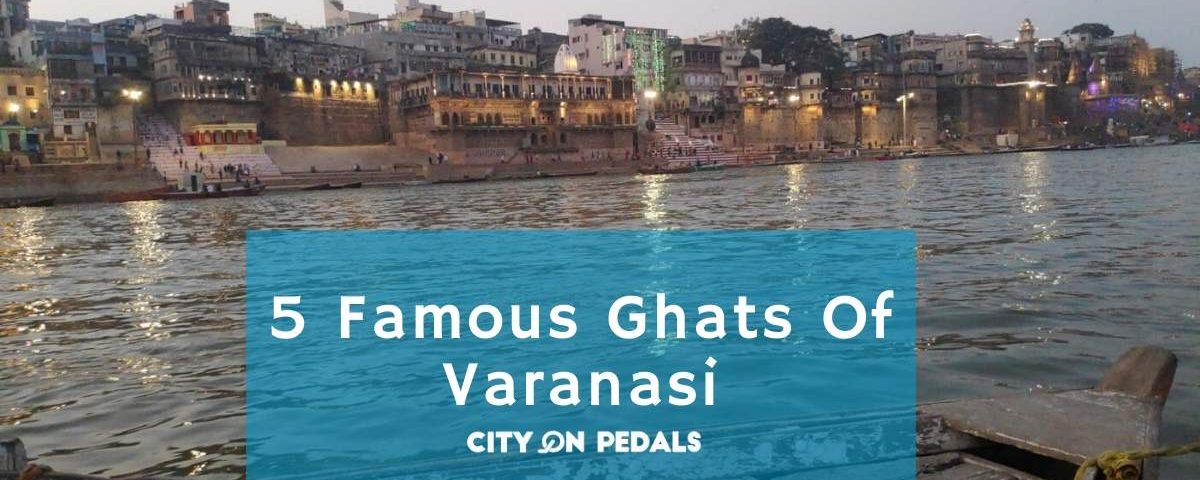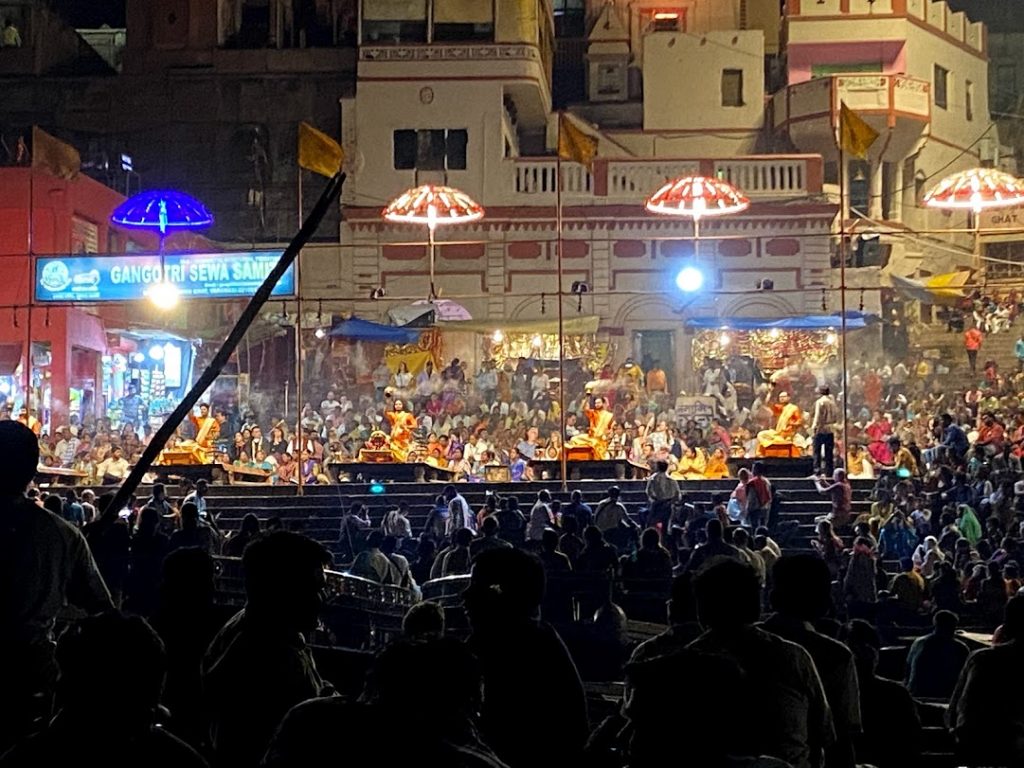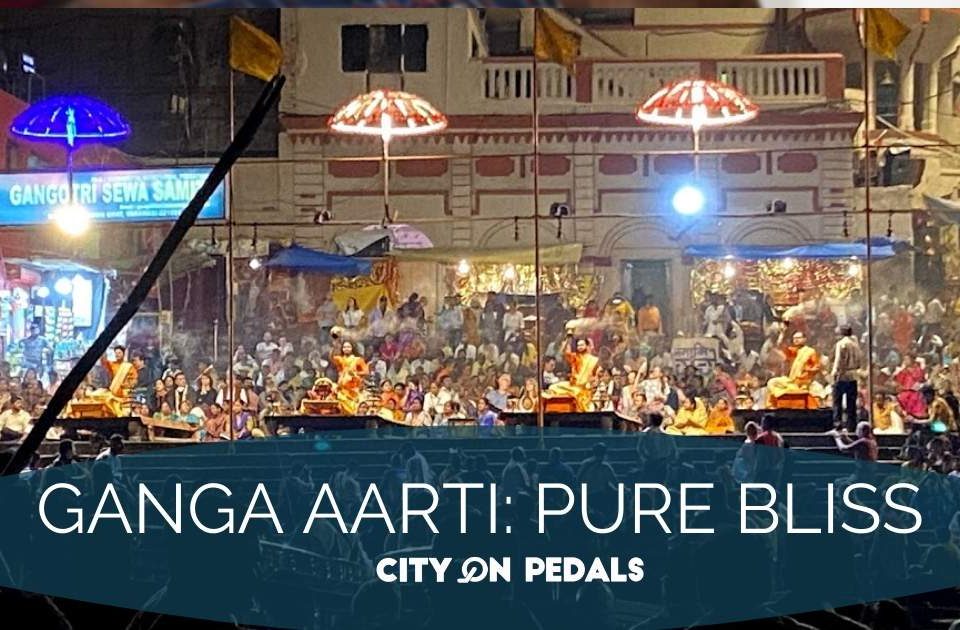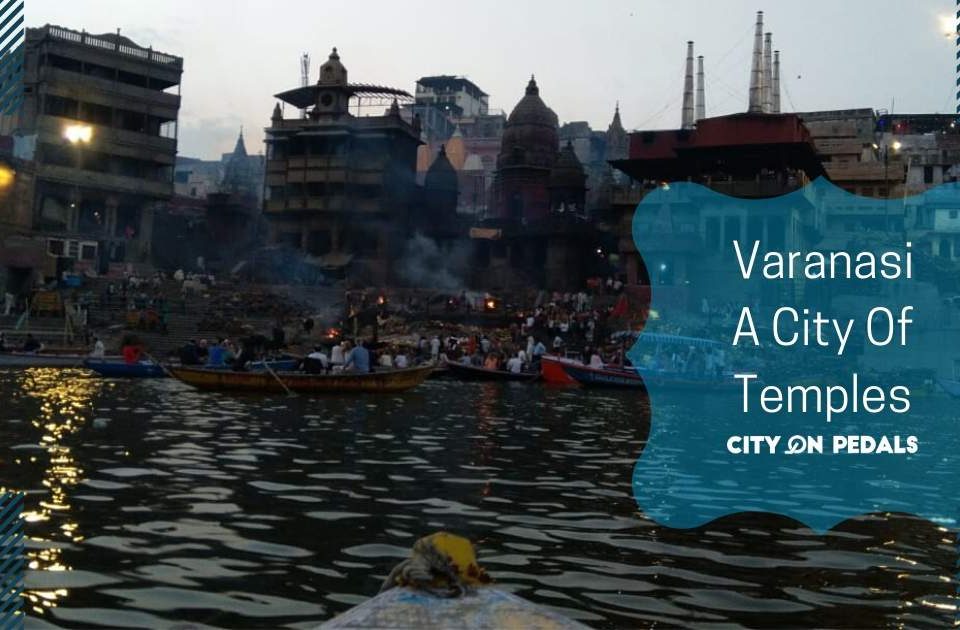- Use promo code "CPT10" & get 10% off on tours
- traveldesk@cityonpedals.com
5 Famous Ghats Of Varanasi

“A city older than history,
older than tradition,
older even than legend
and looks twice as old as all of them put together”
True are the words of Mark Twain. Varanasi is the eternal city of India. Call it Varanasi or Banaras or Kashi, all are the name of one pious place, the city of Mother Ganges. By any name and by all means, Varanasi is one of the oldest continuously inhabited cities of the world. This city is more so remarkable since its great contemporaries Beijing, Jerusalem and Athens have moved on and away from the ancient ways of life. On the other hand, the lanes and buildings of old Banaras still ooze the ethos of ancient India. More than 3000 years old, this city has been referred to by various travelers as “across time zones”. To this day this city is significant from many angles. It is one of the most important pilgrims centers for Hindus, Buddhists, and Jains. It is one of the seven sacred cities of Hindus.

Speak of Varanasi and the first image that strikes your mind is the image of River Ganges and the numerous ghats built on this riverfront. There are a total of 84 ghats lined up here back to back. The religious and cultural life at Varanasi is closely associated with the River Ganges. So a trip to these stepped embankments is a must if you wish to feel the pulse of the city. A boat ride across these ghats is the best way to glimpse life at Varanasi unraveling on the ghats. The ghats are said to be lively with the first ray of the sun where people bathe or offer prayers to the River Ganges with a “Surya Namaskar” – (wishing the Sun God). Here every Ghat has a story, every activity that one religiously follows be it the Ganga Aarti or the cremation activities they have the stories to tell. Shops with various religious paraphernalia. Let us talk about the five most famous ghats of the city.
1. Dashashwamedha Ghat
One thing that is real about the city is its religious fervor in terms of Ganga Aarti – a grand celebration of thanking river Ganga for being perennial and blessing the city to flourish. These celebrations happen here every evening amidst a huge crowd that includes locals, people across the country and foreign travelers. Everyone ensures to behold the sight of Ganga aarti. which itself is regarded as the holiest river for the Hindus, so it is worshipped by people all over the globe.

These pious and sacred celebrations take place at the Dashashwamedh Ghat near Kashi Vishwanath Temple. The legend behind this ghat is that Lord Brahma sacrificed his ten horses during Dasa-Ashwamedha Yajna – a ritual of sacrificing horses. Most importantly the ghat is known for experiencing divinity and bliss in the form of Ganga Aarti.
Original ghat was built by Peshwa Balaji Baji Rao in the year 1748. A few decades later, Ahilyabahi Holkar, the Queen of Indore rebuilt the ghat in the year 1774.
2. Assi Ghat
The city of Varanasi is known by many other names as well, but this particular name originated from the confluence of two rivers, Varuna and Assi. The birth of the river Assi has a mythological story behind it. It is believed that when Goddess Durga was fighting the demons Shumbha- Nishumbha, her sword struck the ground when she destroyed him, resulting in the inception of a stream, now known as the river Assi. The ghat, which came to be on this edge of the river, where the river Assi joins the Ganges, was thus named the Assi Ghat. Every morning saints and priests perform Aarti here which is attended by various pilgrims and locals.
Situated a little far away from the city towards the southern part of Varanasi, the ghat is known for attracting foreigners and tourists from all over the world. It sees at least 300 people every morning and the number multiplies many folds during Mahashivratri and other auspicious Hindu festivals. If one ever visit Varanasi, one must go to the Assi Ghat, not purely for its mythological significance but to experience a more quiet and quaint aspect of Varanasi.
3. Manikarnika Ghat
It is among one of the most quintessential experiences of Banaras which one should not miss. Being one of the oldest ghats it has many lores attached to it. As the name suggests, Manikarnika means Jewel of the Ear or earring wherein “Jewel” stands for “Mani” and Karnika stands for “ring of the ear” respectively. So according to one of the most famous lore, Mata Sati sacrificed her life for Lord Shiva after her father humiliated her husband – The Shiva in a Yagna. Then Lord took her body in his arms and wanted to take it to the Himalayas. During this time, looking at the unending sorrow of Lord Shiva, Lord Vishnu sent his divine chakra to cut the body of Mata Sati into 51 pieces which fell on different parts of the earth. Here, as the earring of Mata Sati fell at this place, so the place came to be known as Manikarnika. This is one of the Shakti Peethas of Mata Sati.

The “Kashi Vishwanath ki Nagri”, as Varanasi is famously called is known for Manikarnika Ghat when it came to the stories of birth and death. The ghat is also known as Maha Shamshana because here the death is celebrated at every hour, at every moment. It is said that the smoke of the fire here never goes to rest. On average, approximately 180-200 bodies are cremated here every day. Remorseful chants of “Ram Naam Satya Hai” – (true is the name of Lord) are sung at every hour of the day and there is smoke everywhere as the bodies are cremated for their eternal peace.
It is weird and bizarre to see how tourists from all over the world who visit here have a fascination to visit this place to see this last-minute journey of a soul. Broadly if we see, then one can say that this is the ultimate reality of life. Nothing but the ultimate truth.
4. Harishchandra Ghat
Another ghat that reminds us of mortality and tells us how transient everything is, is none other than the Harishchandra ghat. This is the place where again the burning of the corpse takes place and is called a place of second burning. This is because of this reason that this ghat is being named as Adi Manikarnika (Manikarnika ghat being the original cremation ground). The ghat has the same relevance as Manikarnika ghat of providing a Moksha – (ultimate salvation) to a soul cremated here. Hindus from distant places bring their dead relatives here to perform the last rites.
As the name of the ghat, it is named after the mythological King Harish Chandra, who once worked at the cremation ground here for the perseverance of truth and reality. It is because of this deed of the King Gods rewarded him of by restoring his lost throne and his dead son to him. However, in the late 1980s, the ghat was given a modernized version when an electric crematorium was opened here.
5. Kedar Ghat
On the Sonarpura road is the narrow Kedar Gali leading to Kedar Ghat. Kedar Ghat is one of the oldest and the maximum visited religious ghats of Varanasi. The Kedar Ghat houses the Gauri Kund, a small water pool that has a picture of Gauri, Lord Shiva’s wife within the eastern wall.
It is stated that the water on this Kund has remedial properties. The Kedareswara Shiva Temple, on the Kedar Ghat, has great mythological significance and it is believed that anyone who visits this temple receives similar bliss and blessings as traveling to Kedarnath Temple which is one of the twelve Jyotirlingas in India. The ancient temple of Kedareshwara is especially revered by Pilgrims from South India. The Government of Uttar Pradesh has renovated this ghat with a proper base in 1958.
So these are only a few of the ghats which are prominently looked in and searched for by people from all over the world due to the religious and life and death activities related to them. But once in the city of Varanasi, you will be amazed to witness the ghat life. So any plans to travel, if yes, please share your reviews with us.






